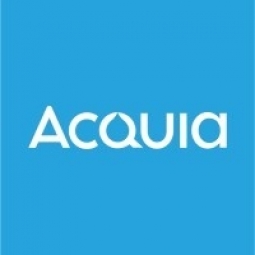技术
- 分析与建模 - 计算机视觉软件
- 功能应用 - 企业资产管理系统 (EAM)
适用行业
- 服装
- 电子商务
用例
- 资产健康管理 (AHM)
- 临床图像分析
服务
- 系统集成
关于客户
Fanatics, Inc. 是一家领先的运动服装、装备和商品在线零售商。该公司是耐克和美国多个国家体育联盟的官方合作伙伴 Fanatics 运营着一个受欢迎的电子商务网站,并拥有令人印象深刻的合作伙伴和客户阵容。该公司的产品内容管理团队包括 200 名营销人员和 7 个全球工作室,每年为超过 100 万种产品制作内容,并将资产分配给 700 多个内部团队、合作伙伴和客户。
挑战
Fanatics, Inc. 是一家受欢迎的运动服装和商品在线零售商,在管理其大量数字资产方面面临着重大挑战。该公司的产品内容管理团队由 200 名营销人员和 7 个全球工作室组成,他们因共享文件夹网络而难以找到特定文件。缺乏集中式自助内容存储库导致工作流程效率低下,成本高昂,通常导致拍摄新图像比查找现有图像更快。体育界的快节奏性质进一步加剧了这些挑战,因为实时事件常常决定狂热者需要创建、编辑、分发、发布甚至消除的图像和内容。由于没有适合搜索的解决方案来存放其数字资产,Fanatics 正处于十字路口,其收入潜力和赢得声誉都面临着风险。
解决方案
Fanatics 确定数字资产管理 (DAM) 解决方案可以解决其速度和敏捷性挑战。 2015 年,他们实施了 Acquia DAM,这是一个搜索友好的系统,显着改善了他们的运营。 Acquia DAM 使用元数据使资产可在系统内搜索,从而无需翻阅众多文件夹。它还充当集中分发中心,组织所有原始数字资产和产品图像,以便内部团队、合作伙伴和客户轻松访问。此外,Acquia DAM 支持审计和存档,允许 Fanatics 根据元数据中捕获的关键日期或事件自动过期或删除数字资产。该系统还提供数据和见解,帮助 Fanatics 了解其内容的使用方式,并保持系统整洁有序。
运营影响
数量效益

Case Study missing?
Start adding your own!
Register with your work email and create a new case study profile for your business.
相关案例.

Case Study
Fire Alarm System and Remote Monitoring Sytem
Fire alarm systems are essential in providing an early warning in the event of fire. They help to save lives and protect property whilst also fulfilling the needs of insurance companies and government departments.Fire alarm systems typically consist of several inter-linked components, such as smoke detectors, heat detector, carbon monoxide, manual call points, sounders, alarm and buzzer. The fire alarm system should give immediate information in order to prevent the fire spread and protect live and property.To get maximum protection a shoe manufacturer in Indonesia opted for a new fire alarm system to monitor 13 production sites spread over 160 hectars. Although the company had an existing fire alarm system, it could not be monitored remotely.It was essential that the new system would be able to be monitored from a central control room. It needed to be able to connect to the existing smoke detector and manual call point. Information should be easily collected and passed on to the Supervisory Control and Data Acquisition (SCADA) system. Furthermore, the system should have several features such as alarm management, auto reporting, being connected to many client computers without additional cost, and run 24/7 without fails. The company also needed a system which could be implemented without changing the architecture of the existing fire alarm system.

Case Study
IoT Applications and Upgrades in Textile Plant
At any given time, the textile company’s manufacturing facility has up to 2,000 textile carts in use. These carts are pushed from room to room, carrying materials or semi-finished products. Previously, a paper with a hand-written description was attached to each cart. This traditional method of processing made product tracking extremely difficult. Additionally, making sure that every cart of materials or semi-finished products went to its correct processing work station was also a problem. Therefore, the company desired an intelligent solution for tracking assets at their factories. They also wanted a solution that would help them collect process data so they could improve their manufacturing efficiency.

Case Study
Retailer Uses RFID Scanner to Improve Efficiency
Patrizia Pepe wished to improve the logistics of their warehouse: accepting incoming goods from their production sites, movement of items throughout
the warehouse, and packaging of goods for distribution to the retail locations. They initially tried to use barcodes for this function. Because barcodes must be individually scanned within a line-of-sight, the acceptance of goods coming into the warehouse was too time consuming. Working with the University of Florence, Patrizia Pepe instituted a five-month pilot project beginning in August of 2009 to test the validity of an RFID solution. The pilot involved tagging of about 60,000 items for the second seasonal collection, and convinced the company to move forward with tagging all items.

Case Study
Monitoring and Controlling Automatic Mixing and Dispensing Machines
As technology advances, textile manufacturing has been transformed from a labor-intensive to a partially or fully automated industry. Automation is significant in all segments of textile production - from spinning to printing, and textile machinery manufacturers are constantly searching for new technologies and automation processes will increase the productivity of their machines. The color paste mixing and dispensing machine is an essential part of the printing and dyeing process. With the advantage of automatically computerized controls and database management, the system can significantly improve its dispensing precision, working efficiency and production quality as well as reducing material consumption.

Case Study
Digital Transformation of Atlanta Grout & Tile: An IoT Case Study
Atlanta Grout & Tile, a Tile, Stone & Grout restoration company based in Woodstock, Georgia, was facing challenges with its traditional business model. Despite steady growth over the years, the company was falling behind the web revolution and missing out on the opportunity to tap into a new consumer base. They were using independent software from different vendors for each of their department information and workforce management. This resulted in a lot of manual work on excel and the need to export/import data between different systems. This not only increased overhead costs but also slowed down their response to clients. The company also had to prepare numerous reports manually and lacked access to customer trends for effective business decision-making.








